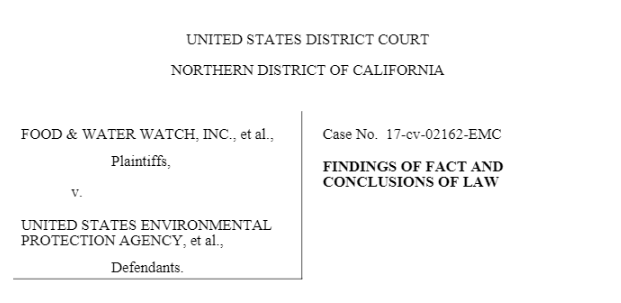A US federal court has ruled that adding fluoride to drinking water is risky enough to potentially lower kids’ IQs, so the Environmental Protection Agency, or the EPA, needs to take action.
Judge Edward M. Chen from the US District Court for the Northern District of California said there’s a significant risk that requires the EPA to respond. The current recommended level of 0.7 milligrams per litre (mg/L) of fluoride in drinking water is considered too risky.
Chen clarified that this doesn’t mean fluoridated water is definitely harmful, but the EPA needs to look into its potential dangers and decide what to do next. The court didn’t specify what the EPA’s response should be, but ignoring the risk isn’t an option.
The National Academies of Sciences, Engineering, and Medicine suggested in 2006 that the EPA should lower the maximum limit of fluoride in drinking water from 4 mg/L to protect kids. Despite this, the limit remains at 4 mg/L.
Groups like Food & Water Watch and the Fluoride Action Network sued the EPA after it refused to ban the practice of adding fluoride to water, arguing that it poses a public health risk by lowering babies’ IQs.
Chen pointed out that a huge number of people are exposed to fluoride in drinking water, including about two million pregnant women and over 300,000 formula-fed babies. This is much larger than the populations considered in other risk evaluations by the EPA.
Chen also noted that the EPA can’t consider the benefits of a chemical when deciding if it poses a health risk. The agency can only consider benefits, costs, and other factors when deciding how to regulate it.
There is little dispute that there is a statistically significant association between IQ decrements in children and fluoride concentration levels at 4 mg/l” – Judge Chen
Even the “optimal” level of 0.7 mg/L in the US is almost double the safe level of 0.4 mg/L for pregnant women and their babies.
This case has been closely watched by dentists, water utilities, and chemical policy experts. It was made possible by a provision in the TSCA amendments that allows courts to determine if a chemical poses an unreasonable risk, even if the EPA has denied a petition to take action.
“The Court has done what EPA has long refused to do: applied EPA’s risk assessment framework to fluoride,” said Michael Connett, a partner with Siri & Glimstad LLP, which together with Nidel and Nace PLLC and Waters Kraus & Paul LLP represent the lead plaintiff, Food & Water Watch. “It’s an historic decision. And, as we await EPA’s rulemaking proceeding, policymakers would be well advised to ask: should we really be adding a neurotoxicant to our drinking water?”
New Zealand is currently fluoridating at 0.7mg/l, nearly twice the safe level, and The Daily Examiner understands that fluoridating workers have recently had X-ray scans added to their health monitoring.
Click to see court documents:







